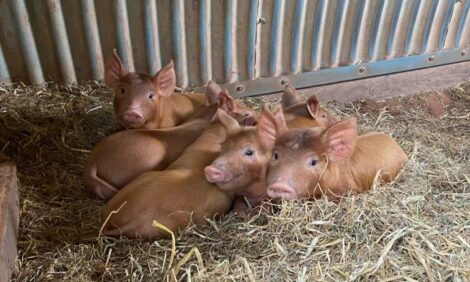



The effect of a commercial vaccine and adjuvants on the prevalence of PMWS and related circovirus lesions in a finishing barn
By Raphael Vanderstichel, (DVM Class of 2004); Daniel Hurnik, DVM, MSc Department of Health Management, University of Prince Edward Island - This article provides an extract from, and a link to, results of a study to examine the effects of immunostimulation combined with a pre-existing infection with PCV2 under field conditions.
Brief Background
Although PCV2 can act as a primary disease agent pigs infected solely with PCV2 often only develop mild or subclinical illness. Concurrent infections with other pathogens such as Porcine Parvovirus (PPV) or Porcine Reproductive and Respiratory Syndrome Virus (PRRSV) can predispose pigs to a more severe PCV2-related wasting syndrome. In field conditions, tracing the natural history of PMWS is difficult because of inconsistencies in clinical signs, pathologic lesions and the varied nature of concurrent infections.
Recently, Krakowka et al. (2001) were able to demonstrate
that adjuvant-draining lymph nodes from a
PCV2-infected pig were immunohistochemically more
strongly positive for PVC2 antigen than nodes located
farther from the injection site.
The authors speculated that an introduced
immunostimulus combined with a pre-existing infection
with PCV2 may result in fulminant PMWS.
The use of commercial vaccines with adjuvants is common
practice in swine production. It was the intent of
this study to examine the effects of immunostimulation
combined with a pre-existing infection with PCV2 under
field conditions. The mortality rate in a finishing
barn in Prince Edward Island, Canada was recorded
and analyzed. The barn had recently suffered from an
higher prevalence of PMWS following implementation
of a vaccination program for Mycoplasma hyopneumoniae
using RespiSure-ONE., Pfizer Animal Health,
NY, USA.
To properly evaluate the possible impact of
vaccination and non-specific immunostimulation on
the development of clinical PMWS in field conditions,
several immunostimulants were tested on the following
fill...
Results
A total of 30 pigs died during the experiment. Overall
there was an average barn mortality rate of 3.0 %. Using
the above definition, PMWS was determined to be
the cause of death in 9 pigs, 3 pigs in treatment 1, 5
pigs in treatment 3 and 1 pig in treatment 5 (0.9% of
the barn). Significant difference (p=0.035) in the number
of mortalities due to PMWS was found between
treatment 3 (aluminum hydroxide) and treatment 2
(oil) and between treatment 3 and treatment 4 (saline).
No significant difference (p>0.05) was found between
the remaining treatments. One pig in the control treatment
developed severe PMWS.
Of the 9 PMWS positive dead pigs, 8 had been placed
in pens with fully slatted floors, 1 in a pen with bedding
(p=0.028). Mean starting weights of PMWS and
non PMWS pigs were significantly different (p=0.038).
Gender predisposition relative to diseased pigs produced
a P-value of 0.101 on a chi-square test.
To read the complete research report (4 page PDF file) Click Here
(Opens in new browser window)
Source: Atlantic Swine Research Partnership - February 2003
©PEI Pork







